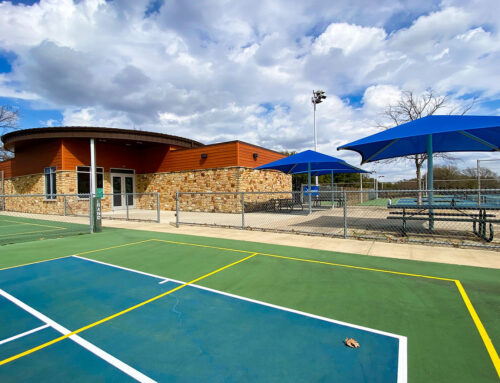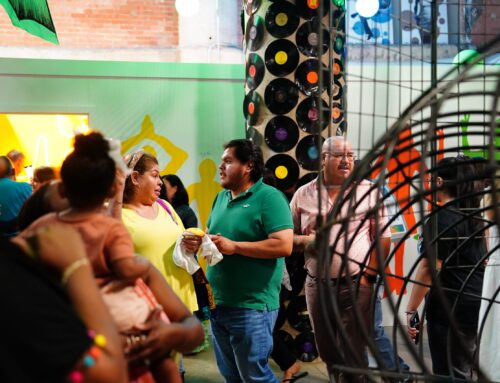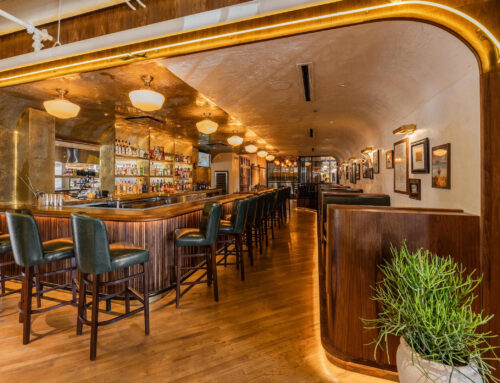Everyone I talked to yesterday — and I talked to a lot of people in the real estate and grocery businesses — had the same reaction to the news that Trader Joe’s would open its first Dallas store on Lower Greenville. Shock. Surprise. Incredulity, even.
But the more I thought about it, the more I realized that reaction was our problem. We were surprised because we expected something else to happen because we’re used to something else happening. Big-time, desirable national retailers don’t open in our neighborhood. They open in the Park Cities or Preston Hollow or Far North Dallas. But not here. We have crime. We have people who don’t look like TV commercials. We aren’t demographically perfect.
But that’s not true any more. John Hetzel of Madison Partners, the developer bringing in Trader Joe’s, said he couldn’t speak for the retailer about why they picked that site. But, he said, “when we pitched them on the property, we told them it had the type of clientèle they were going for. These are the same people who love and support the Whole Foods in Lakewood. My guess? What retailer wouldn’t want to be between Lakewood and the M Streets?”
In other words, we’re not in East Dallas anymore. Not the East Dallas, anyway, that those of us of a certain age know, the East Dallas that we have defended over the past 20 years from those who said it was irrelevant and obsolete — the media, the downtown elite, City Hall, and the real estate wise guys. We’re in the new East Dallas, the post-modern, urban, with-it place to be. And it feels kind of good.
After the jump, how this happened, what it means, and the winners and losers in Trader Joe’s arrival:
Is Trader Joe’s decision to open its first Dallas store on Lower Greenville really that big a deal? After all, it’s only a grocery store with cheap wine. The answer is yes. Retailers don’t get much better than Trader Joe’s, which has a cult-like following among both consumers and retail analysts. They’re the kind of company that cities woo and shoppers start Facebook campaigns to attract. Consider just one fact: One of the selling points for the wets in last year’s wet-dry referendum was that the city couldn’t get top retailers like Trader Joe’s and Costco as long as its most desirable neighborhoods, like Far North Dallas, were dry.
But Trader Joe’s isn’t opening in Far North Dallas, is it?
This decision says, with an emphasis that can’t be emphasized enough, that our neighborhood is no longer the city’s funky step-child. We’re as desirable as anywhere else — and, in this case, a little more desirable. Trader Joe’s could have opened anywhere, and they chose us. That’s going to take some getting used to.
Darrell Hernandez, an executive vice president with United Commercial Realty who has worked on a variety of Dallas and suburban developments, predicted this would happen when the news broke this summer that Mi Cocina was replacing Matt’s in the Lakewood Shopping Center. He said Mi Cocina would be the first of many big names moving into the neighborhood, as retailers and restaurants that weren’t dollar stores realized we had the demographics and the numbers they were looking for. I didn’t believe him. I guess I was wrong.
Now, answering 10 questions about the deal:
1. Why did Trader Joe’s decide on a new store instead of going into the old Whole Foods up the street? Because they wanted to. And, yes, it’s that simple, said one commercial real estate type. Forget any conspiracy theories about the Whole Foods site and owner Mitch Rasansky; Trader Joe’s is infamous for doing exactly what it wants to do and not explaining its motives. It liked the Arcadia Theater site and wanted a new building, so it will move there.
2. When we will know what the store looks like? Pretty much after it’s built. Trader Joe’s is so secretive that Hetzel said he couldn’t discuss any design plans — or even how long the deal took to develop. Madison will build the store for the retailer, and the retailer will lease the building.
3. Will there be enough parking? More than enough, says Hetzel. City code calls for 75 spaces for a 15,000-square-foot building, and Hetzel said there will be two overflow lots on Sears and Bell behind the store. Which, from the way he described the parking, makes it seem like the store will front on Greenville Avenue. The other thing to note about parking? That Trader Joe’s will attract customers throughout the day, spreading out the impact of the extra traffic. That’s the opposite of the bars, which crowd their business into three or four hours at night.
4. Will the food truck park, part of the pre-Trader Joe’s plan for the location, remain? Hetzel said yes, that Madison Partners is committed to the park and will work it into the new site plan.
5. What happens if Trader Joe’s eventually wants to expand? The company has, in other locations, opened bigger stores, and 15,000 square feet is even smaller than the old Whole Foods, which was a small store. City councilwoman Angela Hunt, whose district includes Lower Greenville, said zoning would probably not be a problem if Trader Joe’s wanted to go bigger, and Hetzel said parking would not be a problem, either.
6. What does this mean for the Whole Foods site? No one is quite sure. Walmart was tipped as the new tenant, but that deal was delayed — and may have fallen through. If, in fact, Walmart is the new tenant, the world’s biggest and most powerful retailer almost certainly won’t be scared off by Trader Joe’s and something could still happen. If the new tenant is someone else, they could well be re-considering their options, and the store will remain empty for a while.
7. Is this the beginning of the end of the old bar-happy, drunken college student Lower Greenville? Hunt thinks so, and she could be right. Modern urban development theory, as Hernandez noted, says that once you have a quality anchor, other quality tenants will follow. If it worked in Times Square, why won’t it work here?
8. Who are the losers in this deal? Because, yes, there are losers. The biggest is the Lakewood Whole Foods, which will have real competition for the first time in the 20-plus years it has been in the neighborhood. I would imagine there was much consternation in the various Whole Foods offices when this was announced. The two retailers go head to head in a variety of areas, including the very lucrative categories of vitamins and health care products. The other loser could be Sunflower, the natural grocer on Henderson, which has never really seemed to develop a following.
9. Who are the winners? Hunt, for one. She now has a pro-business credit on her agenda, should she decide to run for mayor in three years. And, if I may be completely partisan, it’s a credit that the men who run the city and are supposed to be so pro-business have not been able to accomplish. The Lower Greenville neighborhoods are winners too, because they get a quality tenant that closes before bedtime, something they have lusted after for 20 years. The other winner? How about Oak Cliff, which has followed the East Dallas formula for redevelopment and could reap the same benefits?
10. And what about that cheap wine? It’s Two-buck Chuck, the nickname for the Charles Shaw wines sold only at Trader Joe’s. They’re called Two-buck Chuck because the wines cost $1.99 in Trader Joe’s California stores, even though the price varies depending on where in the country the wine is sold. Here, it will probably be $2.99. In this, it almost doesn’t matter if Two-buck Chuck is any good (quality varies considerably). What matters is that Trader Joe’s presence, combined with the arrival of the Houston-based Spec’s liquor store chain and the rumored arrival of Total Wine and More, a major national chain, will start a wine price war that will be bloody for retailers and wonderful for consumers. How bloody? The wine people I talked to expect at least one local chain to go away, and maybe two. How wonderful? Those of us who like quality $10 wine will be very excited.





